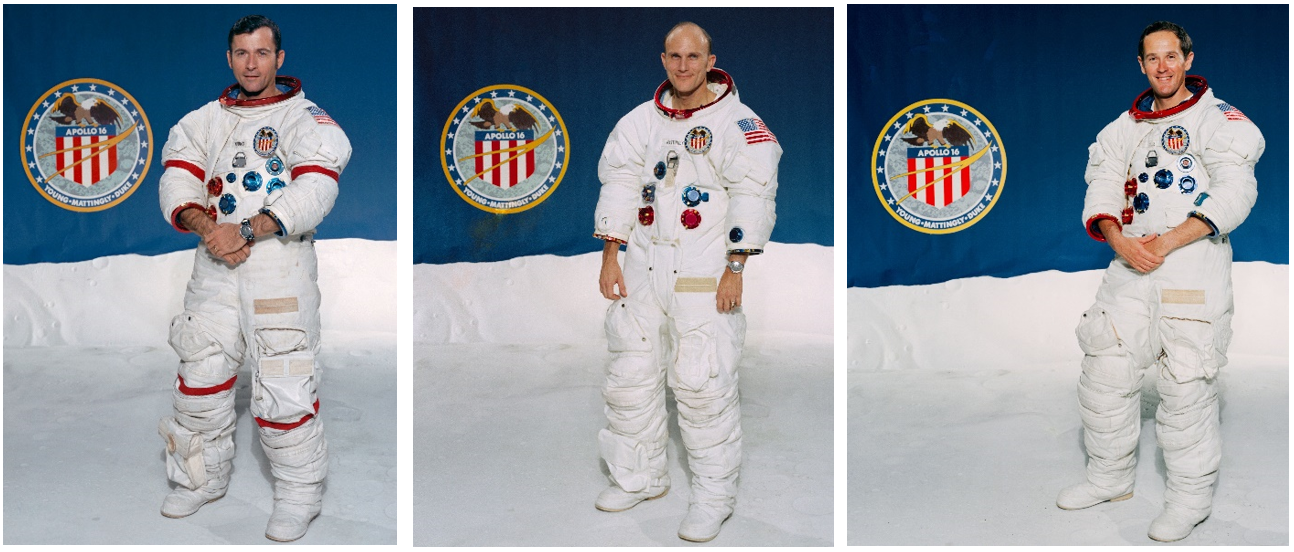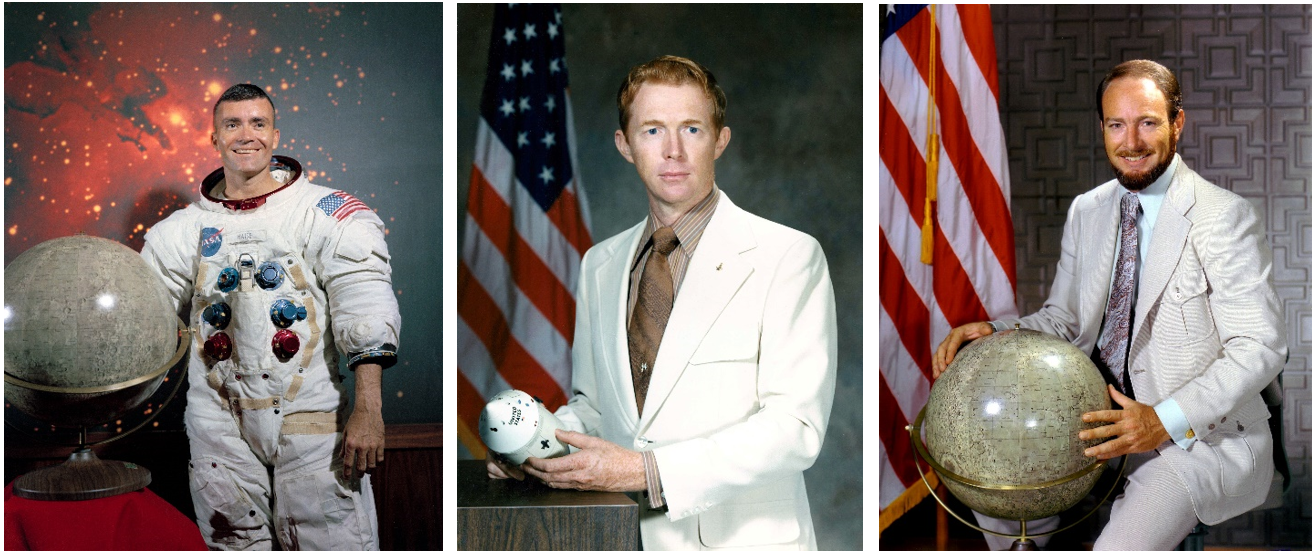Fifty Years Ago: NASA Names Apollo 16 Crew
On March 3, 1971, NASA formally announced the crew for Apollo 16, the fifth Moon-landing mission then planned for March 1972. The prime crew consisted of Commander John W. Young, Command Module Pilot Thomas K. Mattingly, and Lunar Module Pilot Charles M. Duke.
Young, selected as an astronaut in 1962, would be making his fourth trip into space, having flown on the Gemini-3 mission in 1965, Gemini-X in 1966, and Apollo 10 in 1969, the dress rehearsal flight for the first Moon landing. Mattingly, selected as an astronaut in 1966, had been assigned as the prime Command Module pilot on the Apollo 13 crew in April 1970 but, due to an exposure to German measles, had been replaced by his backup, John L. Swigert. Duke, selected in 1966 and making their first trips into space on Apollo 16, in addition to his backup role on Apollo 13, also served as the capsule communicator during the Apollo 11 Moon landing.
 The prime crew of Apollo 16, from left: John W. Young, Thomas K. Mattingly, and Charles M. Duke. Credits: NASA
The prime crew of Apollo 16, from left: John W. Young, Thomas K. Mattingly, and Charles M. Duke. Credits: NASA
The Apollo 16 backup crew consisted of Fred W. Haise, Stuart A. Roosa, and Edgar D. Mitchell. Haise, selected in 1966, had flown as the Lunar Module pilot on Apollo 13 in April 1970 — the flight that suffered an oxygen tank explosion on the way to the Moon, canceling the lunar landing. Roosa and Mitchell had recently returned from their Apollo 14 lunar-landing mission. An earlier unofficial backup crew assignment of Haise, William R. Pogue, and Gerald P. Carr, both from the 1966 astronaut selection, would (according to an unofficial crew-selection process) have been assigned as the prime crew for Apollo 19. When that flight was cancelled in September 1970, NASA elected to assign astronauts with lunar flight experience to fill the backup positions for Apollo 16 and 17. NASA reassigned Pogue and Carr to the Skylab program, and they both participated in the final 84-day mission aboard that space station.
After he completed his Apollo 16 backup duties, NASA reassigned Haise to the Space Shuttle Program, and he flew three of the five Approach and Landing Tests aboard Enterprise in 1977.
 The Apollo 16 backup crew, from left: Fred W. Haise, Stuart A. Roosa, and Edgar D. Mitchell. Credits: NASA
The Apollo 16 backup crew, from left: Fred W. Haise, Stuart A. Roosa, and Edgar D. Mitchell. Credits: NASA
On June 17, 1971, NASA selected Descartes, a mountainous highland region named for a nearby crater, as the landing site for Apollo 16. During their 67-hour stay on the lunar surface, Young and Duke were slated to perform three spacewalks —using a Lunar Roving Vehicle to transport them on their traverses — while Mattingly conducted observations from lunar orbit. Mattingly also planned to conduct a spacewalk during the trans-Earth coast to retrieve film canisters from the Scientific Instrument Module bay in the Service Module.
To be continued …







